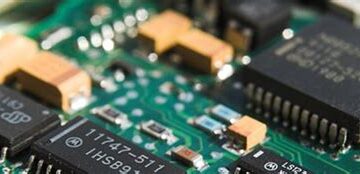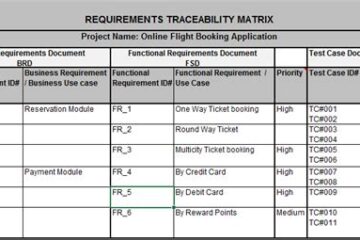A contract electronics manufacturer (CEM) is a company that manufactures electronic components, devices, and equipment for other companies based on their specifications. Unlike an original equipment manufacturer (OEM), a CEM does not design or brand the final product, but rather produces it according to the OEM customer’s requirements.
Key Services Provided by a CEM
CEMs offer a range of manufacturing and supporting services, including:
Electronic Manufacturing Services
- Printed circuit board (PCB) assembly – mounting and soldering components onto PCBs
- Cable and wire harness assembly
- Box build assembly – putting together a complete electronic enclosure
- Testing, inspection, and quality control
Product Life Cycle Services
- Design for manufacturing (DFM) – design optimization for efficient manufacturing
- New product introduction (NPI) – taking a product from design through ramp-up and launch
- Sustaining engineering – support throughout a product’s life cycle
- Materials procurement – sourcing and procurement of components
- Supply chain management – oversight of suppliers and logistics partners
- Inventory management and warehousing
- Repairs, refurbishment and aftermarket services
- End-of-life support – obsolescence monitoring, last-time buys etc.
Value-Added Services
- System integration and box build services
- Customization, configuration, and bespoke engineering
- Global order fulfillment, distribution, and after-sales support
- Compliance, safety, and regulatory testing
Why Companies Outsource to a Contract Manufacturer
There are several key reasons why an OEM may choose to outsource manufacturing to a CEM:
- Cost savings – A CEM achieves economies of scale by aggregating demand across customers. Their expertise and infrastructure investments also increase efficiency. This leads to an overall lower total cost compared to OEM in-house production.
- Specialized expertise and capabilities – Highly complex manufacturing processes like SMT assembly require significant investments in facilities, equipment and personnel training. Utilizing a CEM avoids these overheads.
- Flexibility and scalability – CEMs can more easily scale production up and down based on changing demand. An OEM can avoid both over and under-capacity with a variable, outsourced production model.
- Focus on core competencies – By outsourcing production, an OEM can concentrate investment and strategic focus on design, branding, sales and marketing.
- Speed and responsiveness – A CEM has established infrastructure and skills in place to respond rapidly to changes in demand or market windows. This accelerated time-to-market can be a competitive advantage.
- Global production and delivery – CEMs typically have locations across different regions, enabling localized production and distribution in alignment with customer requirements.
Types of Companies that Engage Contract Manufacturers
Many types of companies across various industries work with CEM partners to manufacture their electronic products, including:
- Consumer electronics companies producing devices like wearables, speakers, headphones etc.
- Industrial OEMs making sensing equipment, IoT devices, broadcast gear etc.
- Telecommunications infrastructure providers manufacturing routers, switches and base stations.
- Aerospace and defense contractors producing specialized electronic systems.
- Automotive suppliers manufacturing infotainment panels, GPS units, and other auto electronics.
- Medical device companies producing patient monitors, imaging equipment and other connected healthcare gear.
Essentially, any company that makes electronic-driven products as part of their offering can benefit from partnering with a CEM to optimize and scale production. The relationship allows them to focus innovation on their core product and service differentiators.
Key Considerations When Selecting a CEM
Choosing the right contract manufacturing partner is critical. Some important criteria to evaluate include:
Manufacturing capabilities and capacity: What production technologies, equipment, facilities and skills does the CEM possess? Do they have open production lines or teams to take on new customers? Can they scale efficiently?
Supply chain expertise: How strong are their component sourcing abilities, vendor relationships, and supply chain processes? Can they secure constrained parts?
Quality systems: Are rigorous quality control and management systems in place? What testing, assurance, and continuous improvement practices do they implement?
Specialization experience: What vertical markets or application expertise do they offer? How closely does this match your product?
Customer focus and collaboration: Do they take a strategic partnership approach and collaborate deeply with customers? Will they customize their processes for your needs?
Global footprint: Do they have production locations, engineers, partnership capabilities etc. in alignment with your distribution strategy? Can they support a global customer base?
Cost competitiveness: While choosing purely on price is risky, understanding their cost model and structures is important to ensure win-win efficiency gains and margins.
Ultimately the selected CEM should offer expertise, services and cultural fit that allows for strategic alignment and shared success over the long term.
Key Steps in the CEM Engagement and Production Process
Design Input
A CEM partnership often starts early, during product development and industrialization. Collaborating on design for manufacturability ensures an optimized, efficient design ready for production handoff.
New Product Introduction
Transitioning a product to production involves detailed coordination – establishing manufacturing processes/flows, sourcing components, programming machinery, trialing tools and quality controls etc.
Contract Agreement & Forecasting
Formal contracts establish details like: pricing structure, quality expectations, intellectual property, payment terms, volume commitments and flexibility, etc. Accurate volume forecasting enables supply readiness.
Volume Ramp & Optimization
As production scales to volume, the CEM leverages experience to optimize throughput, quality, yield and repeatability through continuous improvement initiatives.
Mass Production
The CEM’s infrastructure is now fully primed for scalable, high-yield production to match sales demand fluctuations. Support like order fulfillment, spares/repairs, and obsolescence management underpin output.
Product Sunset or Transfer
Eventually, end-of-life planning is required. The CEM can support last-time builds before helping transfer production tooling/know-how to a new facility or successor product introduction.
Key Performance Indicators to Measure CEM Performance
| KPI | Metric | Purpose |
|---|---|---|
| Quality | Defects per million opportunities (DPMO) | Measures process output quality |
| Customer Reject Rate | Percentage of shipments returned | Quantifies quality issues impacting customer |
| On-Time Delivery | Percentage on-time | Evaluates reliability of delivery commitments |
| Yield | Percentage of good boards/systems completed | Primary production efficiency metric |
| Inventory Turns | Annual throughput divided by average inventory | Evaluates working capital efficiency |
| Cost Reduction | Year-on-year unit cost decrease | Quantifies continuous improvement efforts |
| Responsiveness | Quote-to-order cycle time | Assesses speed fulfilling new business |
| Technology/Service Investments | Dollars, resources allocated | Confirms strategic investments made |
These KPIs should be jointly measured, reviewed regularly between customer and provider, and support a culture of continuous improvement.
CEM Industry Trends and Developments
The electronics manufacturing services industry continues to evolve in alignment with customer requirements:
Increasing Scope and Sophistication
Many CEMs now offer complete box-build design, integration, validation and order fulfillment – essentially a “one-stop shop” solution encompassing the full product life cycle.
Focus on Quality Systems
Given short product life cycles, even isolated quality failures severely impact customer trust and satisfaction. CEMs are prioritizing robust quality control infrastructure.
Agile, Flexible Delivery Models
In dynamic markets with compressed timeframes, CEMs must scale output and reconfigure order fulfillment rapidly while managing costs for competitiveness.
Software/Digital Expertise
With hardware becoming differentiated by embedded software, CEMs require strong firmware engineering, programming, systems integration and cybersecurity capabilities.
Sustainability
Environmental considerations increasingly influence manufacturing decisions – from renewable energy to minimizing waste. CEM/OEM collaboration on sustainability roadmaps is growing.
Advanced Technologies
Emerging techniques like AI-enabled production monitoring, 3D printing, advanced robotics etc. create opportunities to unlock efficiency, customization and responsiveness.
By leveraging these trends, CEMs deliver higher value as strategic partners to OEM customers. Aligned roadmaps and shared success pave the way for future market growth.
Frequently Asked Questions
What are the typical contract terms between a CEM & customer?
Typical CEM contracts specify details including:
- Pricing structure – Cost per unit, tooling amortization, special materials costs etc.
- Volume commitments & flexibility – Forecast volumes plus acceptable variance ranges
- Quality metrics & compliance – Defect rates, corrective action timeliness, regulatory adherence
- Lead times – Order confirmation to delivery timeframes, expedite processes
- Logistics & fulfillment – Freight terms, trade compliance, distribution channels
- Inventory & materials – Buffer stock targets, consignment, last-time buy rights
- Product lifecycle mgmt – Transition plans for next-generation introductions
- Intellectual property – Non-disclosure terms, licensing to enable production
- Payment & general terms – Payment milestones, insurance requirements, dispute resolution etc.
What are some key CEM industry certifications?
Many CEMs pursue certification in management systems like:
- ISO 9001 – Quality management system
- ISO 13485 – Medical devices quality
- AS9100 – Aerospace quality
- ISO14001 – Environmental management
- ISO 27001 – Information security management
- ISO 45001 – Occupational health/safety
These underscore their adherence to rigorous, standardized operational practices preferred by regulated industries. Some CEMs also pursue cybersecurity, data privacy and specialized compliance certifications.
How is CEM pricing typically structured?
Pricing considerations variously include:
- Unit prices based on product characteristics like PCB/component complexity, custom parts usage etc. High-volume baseline rates apply, with higher low-volume charges.
- Tooling/NREs – Non-recurring expenses to prepare equipment, components, testing etc. are amortized over expected volumes.
- Turnkey solutions commanding higher prices for increased production design ownership.
- Material pass-through at cost plus handling. Strategic global sourcing expertise offsets any markup.
- Volume tiers driving down per unit costs at higher quantities due to economies of scale.
- Geographical delivery pricing aligning output location with regional customer demand.
Both parties focus on fair, mutually beneficial pricing promoting an efficient partnership and shared success.
How are quality management standards typically defined in a CEM relationship?
While ISO certification establishes a CEM’s foundational quality management system, each customer also issues standards and metrics like:
- AQL levels dictating process sampling rates and acceptable defect levels
- Outgoing quality criteria specific to finished goods validation procedures
- Corrective action timeliness for root cause analysis and preventative action reporting
- Reliability targets derived from product specs such as MTBF for fielded failure rates
- Regulatory conformance per applicable safety, EMC, environmental etc. compliance standards
- Source inspection rights for customer verification of component sourcing/production
- Warranty failure analysis collaborating with customer to address field returns
- Quality document requirements for process evidence, control plans, instructions etc.
Both CEM and customer share responsibility for comprehensive quality oversight.
What types of engineering support do CEMs typically offer?
In addition to core manufacturing services, CEM engineering support may include:
- Design for Manufacturing (DFM) guidance during product development/industrialization for optimized, lower-cost designs.
- Test development – designing product validation, environmental stress, regulatory approval, and qualification test protocols and fixtures.
- Sustaining Engineering – application of continuous improvement throughout production lifecycle via enhancements like cost reduction redesigns, debugging assistance etc.
- Customized Tooling solutions – for example, functional test fixture creation tailored specifically to customer products.
- Quantity uplift validation – producing additional units to confirm process repeatability before full ramp-up.
- Product transition engineering – enabling transfer to next generation designs or new production environments.
- Obsolescence monitoring & mitigation – component lifespan studies and recommendations to manage electronics scarcity.
This engineering collaboration enables more strategic customer partnerships.



0 Comments